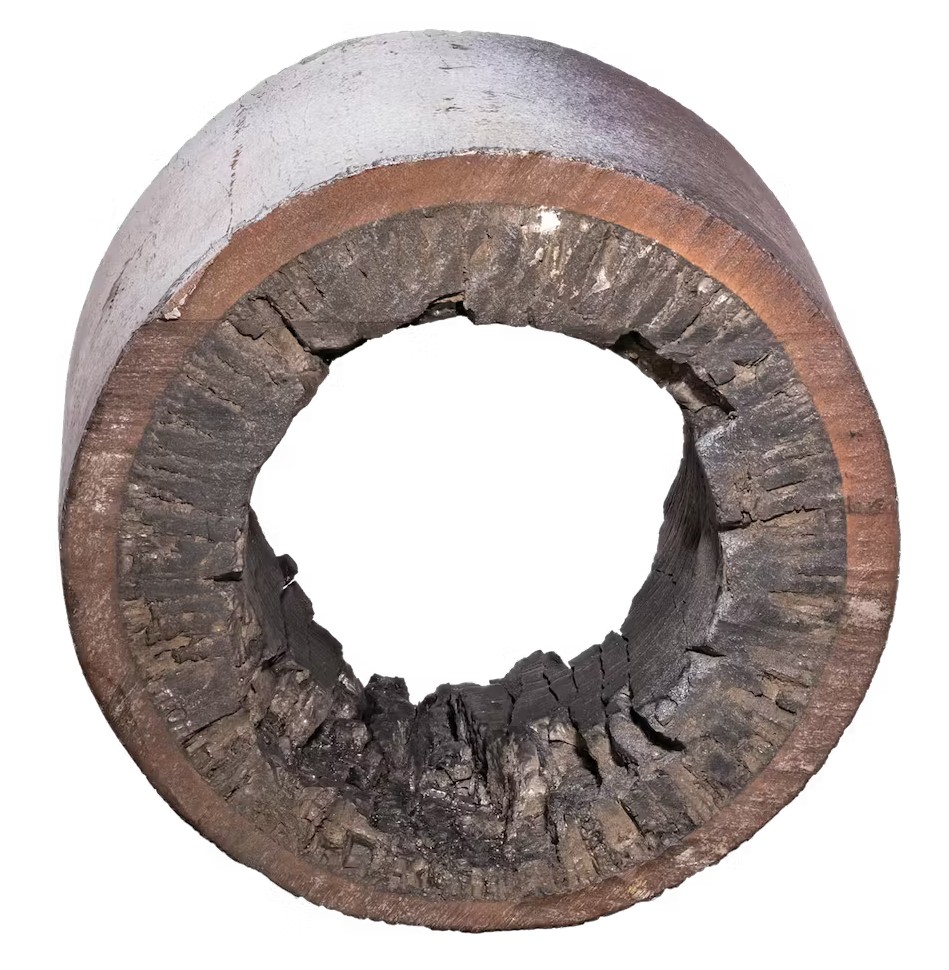 Over time in service, deposits typically build up on the surface of tubes in a heat exchanger. This buildup is known as fouling and can occur on the inside or outside of the tubes (or both sides). Since the fouling layers usually have a lower thermal conductivity than the tube material, this process will reduce the amount of heat that the exchanger is able to transfer. Some amount of fouling can be accounted for in the initial thermal design of the exchanger, by using a standardized fouling factor for the expected service. Proper heat exchanger maintenance includes periodic cleaning to reduce or remove fouling. A major advantage of removable bundle-type exchangers is the ability to thoroughly clean the shell side once removed. Unchecked fouling can reduce flow rates, which in turn can cause uneven heating and major damage to the exchanger.
Over time in service, deposits typically build up on the surface of tubes in a heat exchanger. This buildup is known as fouling and can occur on the inside or outside of the tubes (or both sides). Since the fouling layers usually have a lower thermal conductivity than the tube material, this process will reduce the amount of heat that the exchanger is able to transfer. Some amount of fouling can be accounted for in the initial thermal design of the exchanger, by using a standardized fouling factor for the expected service. Proper heat exchanger maintenance includes periodic cleaning to reduce or remove fouling. A major advantage of removable bundle-type exchangers is the ability to thoroughly clean the shell side once removed. Unchecked fouling can reduce flow rates, which in turn can cause uneven heating and major damage to the exchanger.








